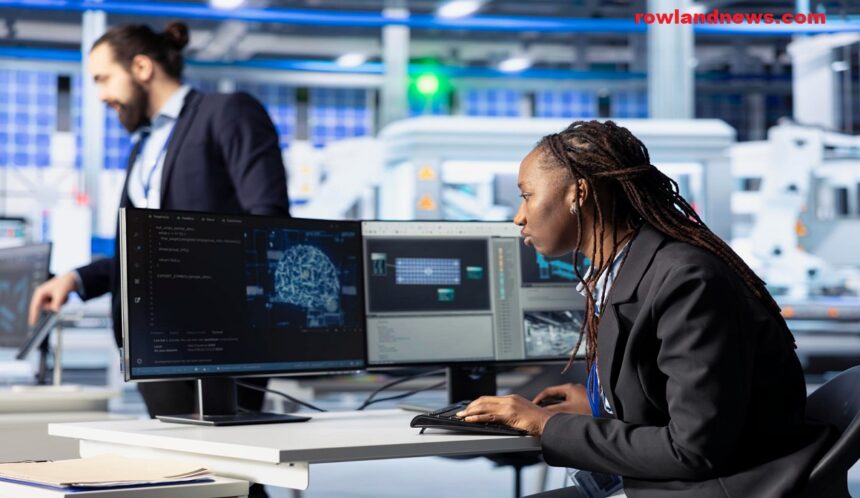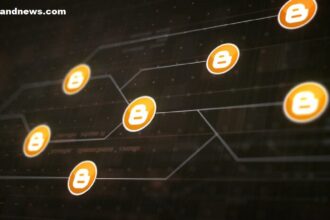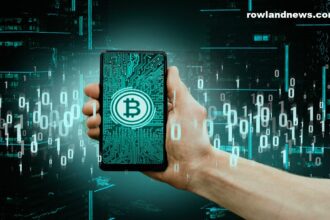The Future of Work Isn’t Coming, It’s Already Here
You can walk into a modern office in 2025. Instead of walled cubicles, there may be some human workers and AI-enhanced systems. Soon after, Haier machines take customer inquiries in real-time; other software transmits inbound messages or even composes reports. It’s like something from a science fiction movie. But it’s real just the same.
In the tech world, Artificial Intelligence (AI) is no longer just a catchphrase. It’s now a new kind of workforce backbone. You’ll find it quicker, more efficient, and more competent around 2025; AI in workforce automation won’t just assist the workplace; it’ll consume whole chunks in its maw. So what does that mean for workers, companies, and indeed the economy as a whole? Let’s take the reins and find out.
What Does Workforce Automation with AI Really Mean?
AI-driven automation utilizes intelligent machines and algorithms to automate tasks that humans previously performed. This ranges from tasks like routine administrative work, as mundane as filing reports for managers, to documenting information on web pages so that others can edit it by right-clicking on the highlighted text and pasting their paragraphs into place, and to higher-level decision-making processes involving many different factors.
It’s not homo habilis or the first Maersk clipper, with its checkered semaphore flags. AI automation 2025 stretches from:
- Talking to AI in customer service chatbots
- Analytical data and reporting
- Maintenance forecasts in AI in manufacturing
- Screening tools for HR
- AI-supported medical diagnosis
- REITY building customer relationship management systems
Unlike traditional automation, which replaces manual labor, AI-driven automation leverages machine learning, natural language processing, and robotics to perform cognitive tasks. These include learning, adapting, reasoning, and making decisions.
How AI Is Already Changing the Workforce
The oldest name in the book: as always, the most extraordinary things begin with customer service
Consider the time you last contacted customer service, compared to believing that “people” you were interacting with were also just a program.
Agents. Current chatbots and virtual agents are already increasingly intelligent. AI is now able to comprehend tone, handle complex queries, and escalate issues only as needed.
According to Zendesk AI, recently featured at a Summerwind industry event, AI in customer service can increase agent productivity with client requests on average by 45% while simultaneously reducing wait times by 20%, all without compromising service performance.
Meanwhile, companies like Salesforce are integrating AI expertise directly into their customer support centers.
FACT: According to Gartner, the AI software market is projected to reach $134.8 billion by 2025.
Manufacturing Is Entering the Smart Era
Here to build robots. AI-enabled sensors and predictive analytics are now essential for maintaining the smooth operation of production lines. Equipment failures can be identified before they occur. Consistently high-quality products now come off the assembly line, and supply chains are no longer just efficient, they’re also smart.
This is not merely a distant theory. Tesla and Siemens have already begun implementing large-scale technologies, resulting in drastic reductions in both unit costs and increased productivity.
From Diagnosis to Documentation: AI in Health Care
In healthcare, the use of artificial intelligence in jobs is reducing administrative burdens and improving patient outcomes. Watson Health and Google DeepMind not only assist doctors in diagnosing diseases more effectively, but also increase such percentages. Medical staff using AI tools will be able to take a string of notes with greater speed than ever before, while their handsets themselves grow more intelligent day by day.
This medical technology is expected to become standard equipment in hospitals by 2025.
HR and Recruitment Are More Data-Driven
Finding the right person for any job is fraught with challenges, as seen in the case of Mandarin & Pixel occupant993. However, AI recruitment systems like HireVue and Pymetrics cannot only scan resumes for keywords but also assess video interviews using facial recognition or voice analysis.
Not without well-known drawbacks, these systems are dramatically streamlining hiring procedures.
Want to get to the heart of the matter? Find out how technology is affecting U.S. employment according to what the Department of Labor has to say.
The Good and the Bad, Pros and Cons of AI Automation in the Workforce
The truth is, AI automation is not all good. It has both inherent benefits and specific risks.
Profits:
- Boosted efficiency
- Lower costs for repetitive tasks
- Data processing is more accurate
- 24/7 availability, no fatigue: win-win situation!
Challenges:
- AI job displacement at the lowest levels of skill
- Determining what AI will do in decision-making if not carefully trained
- Concerns about privacy
- The status quo of current workers and their future demand for qualifications
While specific positions will be eliminated by automation, it will also create new opportunities. AI management, machine learning engineering and data ethics are all emerging job sectors.
What Jobs Will AI Automate from Now Until 2025?
By 2025, up to 30% of the tasks in 60% of jobs could be automated. That doesn’t mean jobs will go away, but they’ll be very different.
Most at Risk:
- Data entry clerk
- Telemarketer
- Routine customer service agent
Least at Risk:
- Future jobs AI won’t replace:
- Creatives
- Mental health professionals
- Strategic decision makers
- Skilled tradespeople
The key? Focus on areas where AI cannot compete, essentially, emotional intelligence, creativity, and logical thinking.
Preparing for the AI-Driven Workforce
So, how do you get a jump start?
📌 Upskill and Reskill
Acquire skills that complement AI, rather than competing with it. Demand them to be data literate, problem-solving, and digitally competent. Upskilling for AI is crucial.
📌 Be Real About AI (Not Just Wired)
You don’t have to be a coder to excel in an AI world, but knowing your stuff–what AI can and can’t do–will give you a significant edge.
📌 Keep It Human
Curiously, as AI expands, the “human” part of work becomes more critical than ever. Leadership, empathy, and adaptability are your superpowers.
The Lynching Pin: AI Is Here to Stay – and It’s Remodeling The Way We Think About The World
By 2025, large companies won’t be the only ones discussing AI; it will be happening every day in your office and at home, automating chores, improving efficiency, and providing everyone with the tools for a brighter future.
The objective isn’t to be afraid of change, but rather to have the capacity and willingness to comprehend and adjust. AI in workforce automation won’t necessarily put you out of work by taking over your tasks; it might revolutionize the way you work instead, if you are willing and ready for change.
Ready for your career to go future-proof? No, our time does change, but we should pivot and stay curious. Tomorrow‘s workforce belongs to today‘s adaptable.













